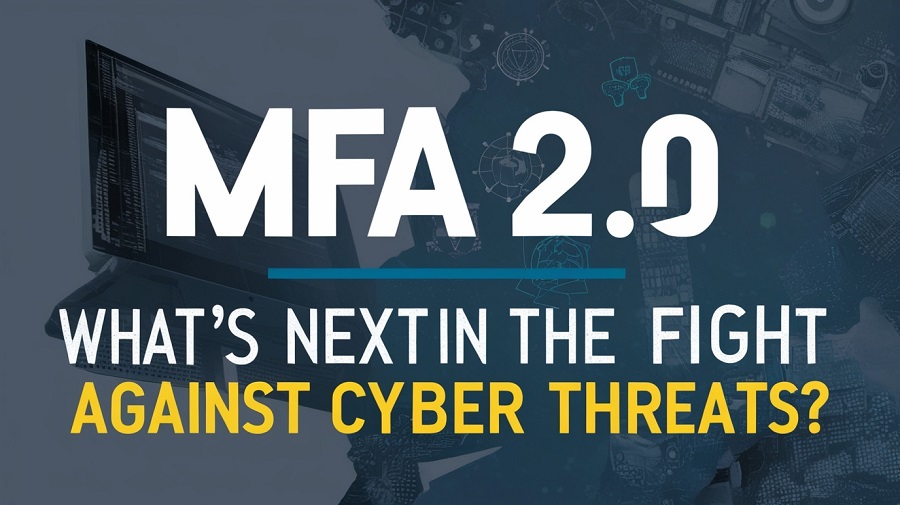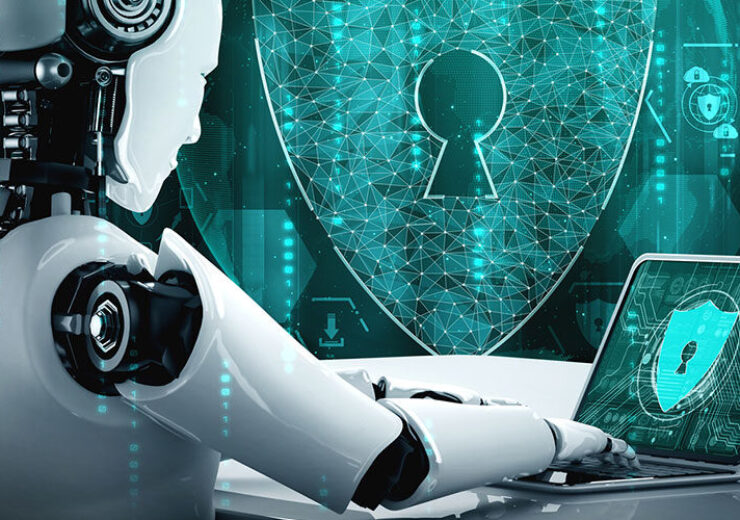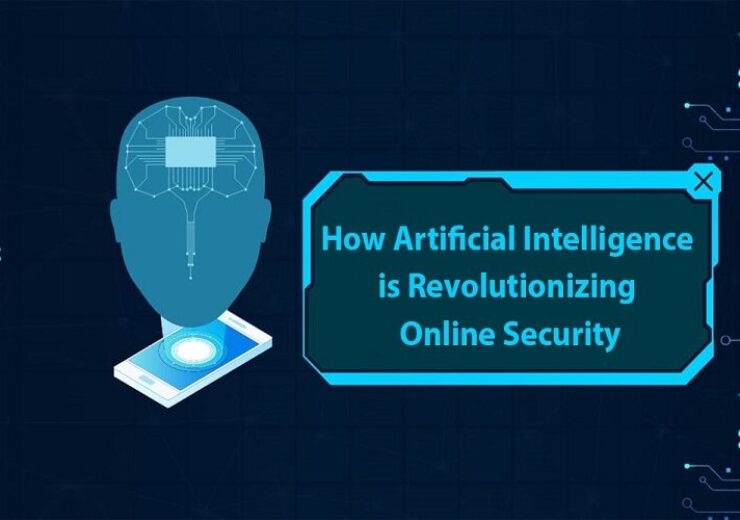MFA 2.0: What’s Next in the Fight Against Cyber Threats?

With rapidly growing digital appearance, cyber security organizations, companies, authorities and individuals have emerged as a top priority. With the frequency and advancement of cybercrimes, it is no longer a requirement to get sensitive and important data, but a need. One of the most important techniques to protect our data in today’s interconnected landscape is Multi-Factor Authentication Solutions (MFA). Over the years, MFA has developed from a simple protection mechanism to a cornerstone of modern identification protection. Now, with the advanced cyber threats, a new era of MFA, often referred to as MFA 2.0, is rising.
But what is MFA 2.0, and how is it built on the existing MFA to handle the developing risk of cyber-attacks? The blog explains the development of MFA, obstacles to its traditional implementation, the emergence of MFA 2.0 and the future of this important safety technique.
The Rise of Multi-Factor Authentication
——————————–
Multi-Factor Authentication (MFA) is a protection protocol that requires users to verify themselves with two or more credentials to confirm their identity. This is normally made up of:
1. Something you know – a password, PIN, or passphrase.
2. Something you have got – a physical device such as a cellphone, a token, or smart card.
3. Something you are – biometric data inclusive of fingerprints, retina scans, or voice reputation.
The essential idea for MFA is that, even supposing one aspect is compromised (like a password), an attacker cannot skip the additional layer(biometric) for security. This dramatically reduces the probabilities of unauthorized individual’s right of entry to and has confirmed to be an effective approach of protecting sensitive accounts and systems.
Earlier Days with MFA
——————————–
In its earliest form, MFA was mainly deployed in a high-security environment such as public agencies, military institutions, and financial institutions. However, as cyber threats became more widespread, the MFA found a way to broaden consumer use with multiple services such as e-mails, social media, banking, etc., which offers MFA as an alternative or compulsory safety system.
For years, the most common implementation of the MFA was a password (someone you know) and OTP generated by hardware or a smartphone (something you have). Although this combination was still an improvement over single authentication, it still had weaknesses.
A significant limit was the dependence on OTP, which can be intercepted or stolen through phishing attacks, man-in-the-middle (MitM) attacks, or sim exchange (where attackers gain control of the victim’s phone number). Despite these challenges, the MFA was a concrete defense against most companies’ and individuals’ targeted attacks.
Emergence of MFA 2.0
——————————–
MFA 2.0 refers to the next generation of multi-factor authentication, which addresses several errors and flaws in the predecessor. As the digital landscape becomes more complex, the attackers have developed a rapidly sophisticated strategy to bypass traditional MFA defense. To overcome these vulnerabilities, an MFA must be created.
MFA 2.0 includes user experience, biometrics, adaptive authentication, and danger intelligence, and there has been progress in many significant areas. Let’s break down how MFA 2.0 is different from traditional MFA and what is next in this ongoing fight against online crime.
Key Features of MFA 2.0
1. Biometric Authentication
One of the largest leaps in MFA 2.0 is to increase the use of biometric authentication. Biometry provides higher levels of protection and convenience than traditional methods. Fingerprint scanning, face identification and even retina scans are now widely used as certification factors in smartphones, laptops and other devices.
Unlike passwords, which can be estimated, stolen or can be used on many websites, biometric data is unique to everyone, making it more difficult for cyber criminals. In addition, biometric authentication can be incredibly adapted to the user, allowing users to reduce the friction of a simple touch or appearance and authentication process.
However, although biometrics are safe, they are not without risk. Biometric data, when stolen, cannot be replaced as a password, it becomes important to use additional security measures such as encryption and secure storage to store sensitive information.
2. Adaptive Authentication
Another identity of MFA 2.0 is the term adaptive authentication. Unlike traditional MFAs, which uses uniform authentication requirements for all users, adaptive authentication considers various relevant factors such as the user’s location, device, network behavior and access time.
For example, if a user logs in from a known device and place, the system can only request a password (something you know). However, suppose the user tries to log in from an unknown location or device. In that case, the system may indicate further verification, such as fingerprint scanning or a one-time passcode (something you have).
This adaptive approach not only improves the safety of adjusting the risk level for each login effort, but it also increases the user experience by reducing the number of authentication stages required for reliable activities. By continuously assessing risk factors such as login patterns, network status and device profiles, adaptive authentication can provide access to access by ensuring strong security against malicious actors for reliable users.
3. Continuous Authentication
While the traditional MFA typically recognizes the user’s identity at the login point, MFA 2.0 contains continuous authentication through the user session. This concept is especially important in a world where users are often logged into important systems for extended periods, which allows opportunities to obtain unauthorized access to the attackers if a session is attacked.
With continuous authentication, the user behavior (such as mouse movement, writing patterns or unit use) is constantly monitored to ensure that the person who reaches the system is still a valid user. If suspected activity is detected, the system may trigger further verification stages, such as the user needs to re-certify or log out.
This concept is especially valuable in high-risk environment, such as online banking or business systems, where attackers can try to take advantage of a certified session to perform fraud activities. Continuous certification ensures that the system is constantly evaluating the user’s identity, making it difficult for the attackers to maintain without access.
4. Behavioral Biometrics and AI Integration
Behavior Biometrics MFA 2.0 has another growing trend. This approach analyses unique patterns in the way a user interacts with a device – such as writing speed, mouse movements or pressure applied to touch screen. This data can be used to continuously confirm a user in the session and add an extra layer of security without the need for manual input.
In addition, artificial intelligence (AI) and machine learning (ML) are quickly integrated into the MFA system. These technologies enable the user and activate detecting real -time danger by analyzing the huge amount of network data. They can identify unusual patterns, such as an unexpected place or a new device, and automatically trigger extra authentication steps or block suspicious activity.
The integration of AI and ML in the MFA system is a grain of gaming, which makes it possible to detect smart and quick danger. Over time, the AI-operated MFA system can learn user patterns and adapt to the authentication mechanisms to continuously improve security. In addition, AI can help identify new dangers and trends, so that organizations can continuously respond to potential weaknesses.
5. Passwordless Authentication
To put off the vulnerabilities related to passwords, MFA 2.0 is also shifting toward a passwordless future. Passwords have lengthy been the weakest link inside the protection chain, liable to theft, reuse, and bad management. As a result, many organizations are looking to update conventional password-based systems with passwordless authentication methods.
Passwordless authentication can use a variety of factors, including biometrics (e.g., fingerprint or face recognition), security keys, and magic links (special URLs sent via email that allow users to log in without a password). These methods offer a more secure and user-friendly alternative to passwords while still maintaining the core principles of MFA.
By eliminating passwords, organizations reduce the risks of phishing attacks, credential stuffing, and brute-force attempts. Furthermore, passwordless authentication methods can be much easier to implement and manage, especially in environments where users are mobile or remote.
The Challenges of MFA 2.0
——————————–
While MFA 2.0 provides significant improvement in the predecessor, it is not without the challenges. New hardware, software and infrastructure are needed to use more advanced certification methods such as biometrics and continuous authentication, which can be expensive and complicated to use.
In addition, as MFA becomes more sophisticated, we also take a strategy for cyber-criminal. The attackers are already trying to bypass biometrics such as tightening face identification systems or using AI techniques to use individuals’ identity. Therefore, it is important for organizations to continuously update your MFA system to be ahead of new dangers and reduce new attack vectors.
In addition, user experience can sometimes be a barrier to adoption. Although biometric authentication and password -free systems are much more convenient for users, there is still a learning status for many outfits, and some users can resist these new techniques. To ensure that MFA 2.0 is easy to use, while maintaining strong safety is a delicate balance.
The Future of MFA: What’s Next?
——————————–
Looking ahead, the future of MFA will likely include even more innovative technologies designed to bolster security and improve user experience. Some potential advancements include:
1. Quantum-Resistant Authentication
Since quantum calculation moves forward, cryptographic algorithms that emphasize the traditional MFA may be unsafe. The Quantum Computer can theoretically break many encryption techniques today, requiring the development of new, quantum-resistant authentication protocols. Research is already underway in the region, and the MFA solutions are likely to develop to include quantum-proof technologies as they are ripe.
The quantum-resistant MFA protocol will include new cryptographic algorithms that are resistant to attacks from quantum computers. This may include cryptography by quantity (PQC), or other techniques designed to protect digital identity from potential hazards generated by quantum calculation.
2. Blockchain-Based Authentication
Blockchain technology has attracted considerable attention to its ability to provide safe, decentralized authentication solutions. By utilizing the unchanged blockchain account book, the MFA system can enable users to control and verify their identity without relying on centralized officials as password managers or identity providers. This can help eliminate many risks associated with the centralized database and improve privacy and security.
Blockchain-based authentication will allow for more user control over your data and can reduce the risk of large data laws. For example, decentralized identification (DID) solution may allow individuals to confirm the only supplier in services without highlighting their sensitive data.
3. AI-Driven Threat Intelligence
Integration of AI and machine learning into the MFA is already detecting and reducing the risk in real time. However, future development may include more advanced AI-operated threats intelligence systems that can predict and prevent cyber-attacks before they occur. These systems can analyze large data from the entire network and automatically meet authentication requirements depending on the level of real time.
The AI-powered MFA system will continuously develop and adapt to new attack methods, learn from large amounts of data, and use danger intelligence to make real-time decisions about using further security measures. This will actively increase active safety opportunities so organizations can be ahead of sophisticated attackers.
Conclusion
As cyber-attack evolves, our strategies should also be capable for digital identity and safety for systems. MFA 2.0 represents the next step in this ongoing battle, including more advanced techniques such as biometrics, adaptive authentication and AI-operated detections to improve safety and user experience.
While the traditional MFA has proven effective in many scenarios, the rapidly sophisticated nature of cyber-attacks means that MFA 2.0 is required to be ahead of emerging dangers. As several organizations use the authentication methods of this next generation, we can expect to look at strong, more flexible safety systems that protect against the growing wave of cyber threats.
In the fight against cybercrime, MFA 2.0 is just one piece of the puzzle—but it is an important piece that plays an essential role in achieving our safe digital future.



